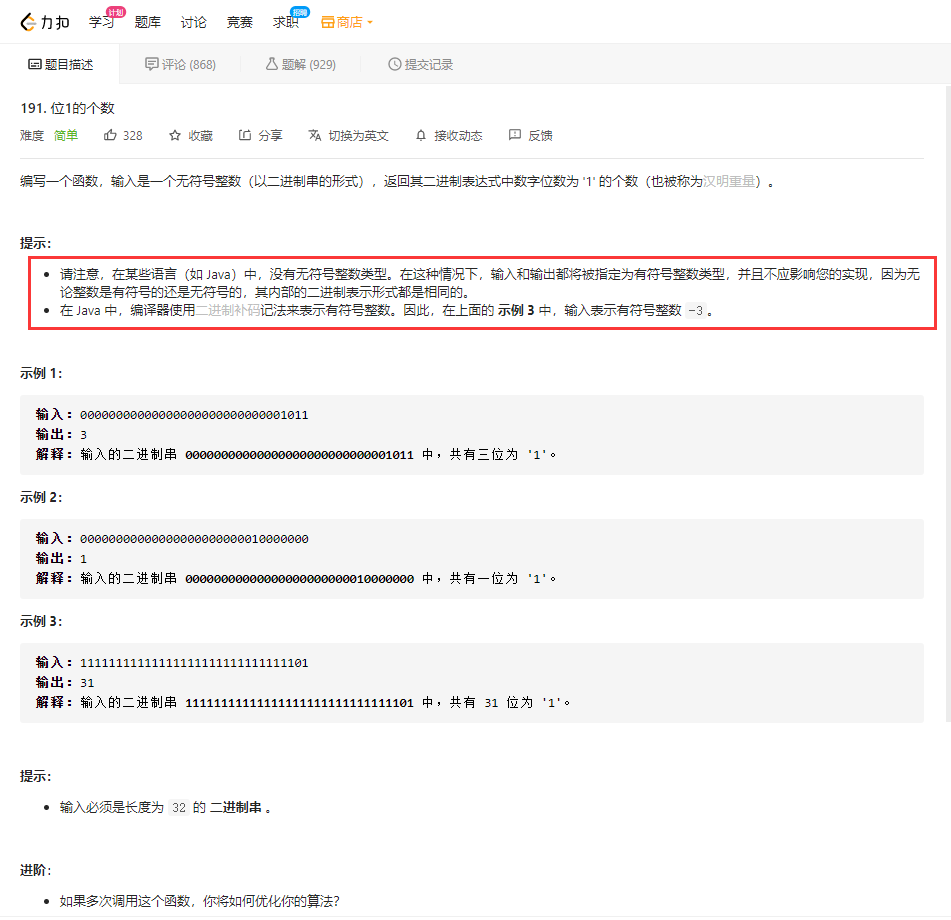# [题目描述](https://leetcode-cn.com/problems/number-of-1-bits/)

## 方法1 右移32次
我们直观地统计二进制中每一位是否包含1。
做法是:
1、使用 n & 1 得到二进制末尾是否为 1;
2、把 n 右移 1 位,直至n=0;
于是我们可以写出以下的代码(**我真的写出了这样的代码...**):
```java
public class Solution {
// you need to treat n as an unsigned value
public int hammingWeight(int n) {
int res = 0;
while(n!=0){
res += n&1;
n = n>>1;//算术右移
}
return res;
}
}
```
### 结果:这里有坑,以后注意了
在Java中上面的代码看似没毛病,但实际上有问题的。
首先在Java中 负数的高位补码用1补,然后还有下面2种位移运算符:
算术右移 >> :舍弃最低位,高位用符号位填补;
逻辑右移 >>> :舍弃最低位,高位用 0 填补。
于是对于负数而言,其二进制最高位是 1,如果使用算术右移,那么高位填补的仍然是 1。也就是 n 永远不会为 0陷入死循环。
解决方案就是在上面的代码中用**逻辑右移**就可以了;
## 优解:`n & (n - 1)`
n & (n - 1) ,这个代码可以把 n 的二进制中,最后一个出现的 1 改写成 0。
> 图示:

因此 执行k次n&(n-1)使得n=0,k就是n的二进制中1的个数
```java
public class Solution {
// you need to treat n as an unsigned value
public int hammingWeight(int n) {
int res = 0;
while (n != 0) {
res ++;
n &= n - 1;
}
return res;
}
}
```

LeetCode191. 位1的个数

